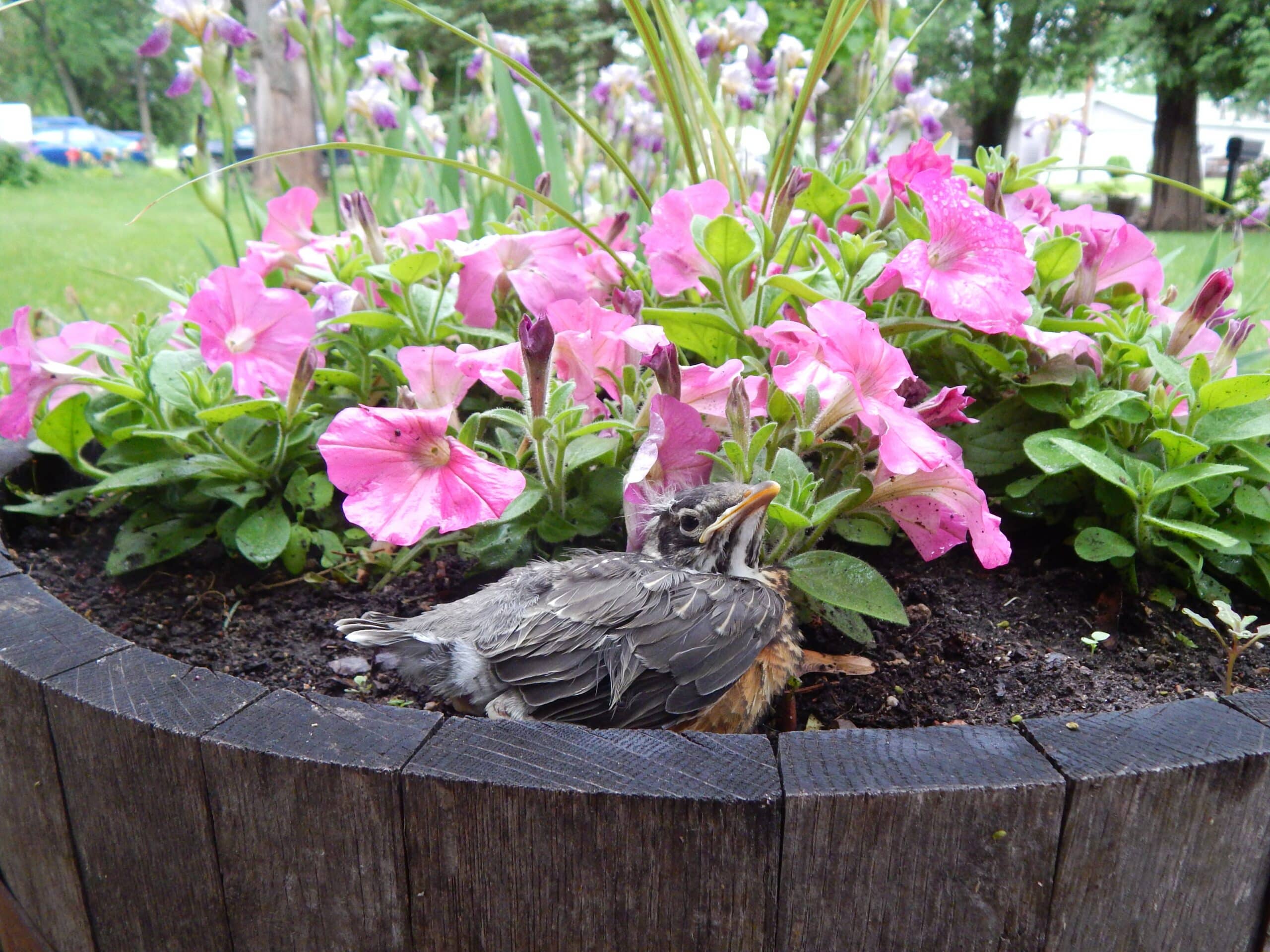Do you remember the saying, “Give a man a fish and you feed him for a day; teach a man to fish and you feed him for a lifetime”? Gardening is somewhat similar in that if one knows how to grow flowers, they can continue to enjoy the beauty of their garden year after year. Petunias are one of the most popular annuals, beloved by gardeners everywhere. With proper care and maintenance, petunias will bring your garden to life with its colorful blooms and fragrant aroma. Read on to learn how to grow and care for petunias in your own garden.
Gardening is an art form, as well as an expression of love for nature. Growing petunias is no different; it requires skill, finesse, and patience. This delicate flower has been described as “the perfect combination of effortless beauty” because it requires minimal upkeep but yields stunning results. Not only does the bloom add subtle color to any garden or bouquet, but its fragrant aroma can also brighten up any space!
Each variety of petunia has unique traits that require particular attention from its gardener. Whether you are growing them indoors or outdoors, there are many tips and tricks that all petunia lovers should know in order to ensure success in growing this delightful flower. From planting and fertilization methods to pruning advice—we’ve got all the information needed to help make your petunia-growing experience both enjoyable and rewarding!
Selecting Petunias
When buying petunias, it’s important to consider their color, size and texture. A gardener might have a certain vision in mind when they head to the nursery and they’ll want to be sure they find the perfect plants for their space. But it’s not just about aesthetics; certain types of petunias are better suited for certain climates, so researching your options before purchasing is a must.
The good news is that there are plenty of varieties of petunias to choose from! Whether you’re looking for a cascading type with trumpet-shaped flowers or an upright variety with double blooms, you can find the right petunia to fit your needs. Plus, some types are even more resistant to diseases like powdery mildew and blight than others.
Whichever type of petunia you choose, make sure you check on their water requirements as well. They need regular watering during dry spells but can quickly become overwatered if not monitored properly. Keep an eye out for wilting foliage or yellowing leaves – these could be signs that your petunias need more or less water than usual. With proper care and attention, your petunias will bring beauty and life to any garden!
Starting Petunias From Seeds
Starting petunias from seeds is a task that requires patience and dedication. Taking the time to nurture the tiny seedlings from inception, until they are established and flourishing, can be a rewarding experience. Imagine those petunias in your garden, proudly blooming with vibrant colors and bringing joy to your senses. It’s an accomplishment worth striving for!
The first step is to find good quality seeds that have high germination rates. Petunia seeds are small, so it’s important to handle them carefully when planting in order to avoid damaging them. You’ll also need pots or trays for starting the seeds indoors, along with soil mix and water. Planting the seeds at least 1/4 inch deep will help ensure successful germination and growth.
For best results, it’s important to maintain adequate moisture levels while keeping the soil temperature between 65-70°F (18-21°C). This can be achieved by using a potting mix that drains well and providing supplemental watering as needed. With proper care and attention, you’ll soon see those little seedlings emerging from the soil – a sign of success!
As your petunias continue to grow, you’ll be on your way to planting them in the garden where they can truly shine!
Planting Petunias In The Garden
If you’re looking to add some color and vibrancy to your garden, planting petunias is an excellent way to do so. Placing petunias in your garden can bring a burst of life with their bright colors and sweet fragrance. To ensure successful growth, here’s what you need to know:
Firstly, when planting petunias in the ground, it’s important to select a spot that has ample sunlight – at least 6 hours per day – and well-draining soil. Additionally, they thrive best in soil pH levels between 5.5 and 8.0. If needed, add organic matter like compost or manure for better aeration of the soil.
Secondly, you’ll want to dig holes about 2 inches deep for each petunia plant. Space them about 12–18 inches apart from each other; this will give the plants enough room to spread out and get enough nutrition from the soil. Place one plant in each hole, cover them with dirt, and press down gently before watering them thoroughly; this helps create a secure environment for the roots of the plant grow into.
Thirdly, adding mulch around the base of each plant can help conserve moisture and keep weeds away (which are known to compete with petunias for resources). Once planted, keep an eye out for pests like aphids or thrips as they can damage your plants; if you notice any insects on your petunias, use organic methods such as insecticidal soap sprays or neem oil solutions to get rid of them quickly before they cause more problems.
With these tips in place, you’ll be ready to provide your petunias with all the right conditions they need for beautiful blooms throughout the season!
Providing The Right Sunlight For Petunias
Providing the right sunlight for petunias is essential to their growth and health. Sunlight provides the energy needed for photosynthesis, which in turn fuels plant growth. But too much direct sunlight can cause petunias to wilt and bleach out; a balance is key. Let’s look at where and when you should place your petunias for optimal growth.
Petunias typically need 6-8 hours of direct sunlight each day to thrive. If you live in an area with intense sun, it’s best to provide some shade during the hottest times of day, or place your petunias in an area that gets mostly indirect light throughout the day. During spring and summer months, morning sun is ideal as it won’t be as harsh.
When grown indoors, position your petunias near a south-facing window so they get plenty of natural light but are not exposed to too much direct heat from the sun. For those who lack natural light indoors, artificial lighting can be used instead – be sure to use grow lights specifically designed for plants though! With the right amount of sunlight and some love and care, your petunias will surely flourish.
Now that we know how important providing just the right amount of sunlight is for petunia growth, let’s take a look at how we can ensure proper watering…
Watering Petunias
Watering petunias is an important part of the care process. When growing petunias outdoors, they should be watered deeply and thoroughly, at least once a week. This helps to ensure that their roots get enough moisture for optimal growth. Here are 4 tips on how to water petunias successfully:
Check soil moisture before watering – Petunias need moist soil to stay healthy, but overwatering can cause root rot. Use your finger or a soil probe to check the top couple of inches of soil before watering. If it feels dry, then it’s time to water.
Choose the right time of day – The best time to water petunias is in the morning hours when temperatures are cooler and there is less evaporation from the sun. Doing this also helps reduce fungal diseases caused by wet foliage overnight.
Avoid getting foliage wet – When watering petunias, try not to get their leaves wet as this can cause fungal diseases like powdery mildew or leaf spot. Instead, use a watering wand or soaker hose directed at the base of each plant instead of overhead sprinklers which can spread disease-causing organisms through droplets on leaves and flowers.
Make sure petunias get enough moisture – Petunias appreciate regular deep irrigation since they have shallow roots and require lots of water for healthy growth. Soaking them thoroughly every week is recommended for optimum performance and blooms!
By following these tips you’ll ensure that your petunia plants get just the right amount of water for lush growth and beautiful flowers throughout the season! Feeding your petunia plants with fertilizer will further help them thrive and produce abundant blooms over time.
Feeding Petunias
Feeding petunias can be a tricky task. On the one hand, you want to fertilize them regularly to ensure their growth and beauty; on the other, you don’t want to over-fertilize, which can lead to too much foliage and not enough blooms. Juxtaposed with the previous step of watering your petunias, feeding requires a careful balance in order to help them thrive.
Fertilizing petunias two or three times per season is an effective way to maintain their growth and health. Look for a fertilizer that contains high phosphorus content and low nitrogen content; this combination will help promote lots of beautiful blooms while controlling foliage growth. Sprinkle the fertilizer around the base of each plant once every six weeks and water it in thoroughly after applying.
Additionally, when you see blooms dying off, deadhead them right away. This will help encourage new blossom growth by redirecting energy back into the plant instead of allowing it to spend energy on producing seeds. TIP: For an extra boost during periods of intense heat or drought stress, consider using a water-soluble fertilizer solution mixed with water every two weeks during these tough times for your petunias.
Controlling Weeds In Petunia Plantings
Weeding petunias can feel like an uphill battle, but with some care and attention it doesn’t have to be. Taking the time to properly control weeds in your petunia plantings is like taking a deep breath of fresh air: it’s essential for success.
Like any garden, petunias are vulnerable to weed competition. Weeds can quickly take over if you’re not careful, stealing vital nutrients and light from the plants you’ve worked so hard to nurture. To keep weeds at bay, take a preventative approach by regularly removing them before they even have a chance to germinate. Pulling weeds by hand is the most effective way, since some herbicides can damage delicate petunia growth.
Mulching is another great way to prevent weed growth in your petunia beds. A generous layer of mulch will help block out light from reaching any potential weed seeds in the soil, as well as providing insulation for your flowers during colder months. Additionally, mulch helps retain moisture in the soil and keeps your petunias looking neat and tidy throughout the season.
With these simple yet effective steps, you’ll be able to enjoy lush beds of beautiful petunias without having to worry about pesky weeds getting in their way. And with that peace of mind comes time for another important part of petunia maintenance: pruning!
Pruning Petunias
Once your petunias are established, they need to be pruned in order to encourage blooming. Pruning helps promote air circulation, which can help prevent diseases, and it also keeps the plants tidy and neat-looking. It’s important to prune petunias on a regular basis for optimal health and bloom production.
The best time to prune petunias is when you first plant them and then again in late summer or early fall. For the initial pruning, cut back the stems by about one-third of their length. This ensures there is plenty of room for new growth and encourages more blooms. Once you have established your petunia plants, prune away any dead or diseased branches as soon as you notice them. Prune off any stems that are growing too tall or leggy, too—this will encourage branching and more flowers.
Regular maintenance will keep your petunias looking their best with lots of vibrant blooms throughout the season. With proper care and attention, you’ll be able to enjoy beautiful petunias in all their glory! To keep them healthy, don’t forget to deadhead spent flowers as often as needed so that new blossoms can take their place.
Deadheading Petunias
It’s estimated that petunias are one of the most popular flowering plants in the world, with over 20 varieties available. For many gardeners, they’re a favorite choice to brighten up any garden or flower bed. But if you want to keep your petunias looking their best, there are some steps you’ll need to follow – like deadheading.
Deadheading involves removing spent flowers and stems from the plant so it can focus its energy on producing more flowers rather than seeds. This is an important part of petunia care because it helps them continue to bloom for longer periods of time. To do this, simply use scissors or pruning shears to cut off the spent blooms at their base. Be sure not to remove too much foliage as this will reduce the plant’s ability to photosynthesize and produce more flowers.
Once your petunias have been deadheaded, it’s important that you continue to care for them properly. This includes providing regular water and fertilizer as well as controlling any pests or diseases that may arise. It’s also a good idea to provide some shade during hot days and cover them if there is forecasted frost in your region. With these simple steps, you can keep your petunias looking beautiful all season long!
TIP: Deadhead your petunias every few weeks during peak bloom times for maximum flowering potential!
Dealing With Pests And Diseases
It almost appears ironic that despite the immense effort and care put into growing petunias, pests and diseases can still cause them harm. But such is life; nothing is ever as perfect as it seems. Nonetheless, knowing how to deal with such nuisances is essential for a successful petunia harvest. Here are a few tips on how to tackle pests and diseases:
- Monitor your plants regularly – keep an eye out for any signs of disease or insect infestations and act swiftly if spotted.
- Use natural remedies such as neem oil or insecticidal soaps to keep bugs at bay.
- Remove affected foliage immediately to prevent further spread of the disease or pest infestation.
- Provide adequate ventilation to your petunias to reduce humidity levels which will help prevent fungal diseases from occurring in the first place.
No matter how much time you spend caring for your petunias, pesky pests and diseases can still creep in and cause havoc. Taking preventative measures such as monitoring your plants, using natural remedies, removing infected foliage, and providing adequate ventilation can help protect your beloved petunias from any unwanted visitors! Now that we have covered dealing with pests and diseases, it’s time to move on to learning about the best way of container planting for petunias…
Container Planting For Petunias
It’s estimated that over 10 million petunias are grown annually in gardens and containers! If you’re one of the many people who want to grow petunias, container planting is an excellent way to do it. Here’s a quick look at what you need to know about container planting for petunias.
First, it’s important to select the right kind of planter for your petunias. You’ll want something that provides plenty of drainage and can be easily moved around so you can adjust the amount of sun they get throughout the day. Consider using a potting mix specifically designed for container plants when planting your petunias – this will ensure that they get all the nutrients they need.
To keep your petunias looking their best, make sure to water them regularly and feed them with a balanced fertilizer every two weeks or so. Additionally, deadheading any spent blooms will help encourage more flowers throughout the season. Pruning back leggy stems is also recommended if any develop.
With proper care, you can enjoy beautiful blooms from your petunia container garden all season long!
Overwintering Petunias
As a gardener, you understand that in order to keep your petunias thriving and beautiful, you need to know how to properly overwinter them. This process can be extremely rewarding if done correctly. To ensure successful wintering of your petunias, there are several steps you must take.
Firstly, make sure you have the right type of petunia for the climate you live in. Some varieties are more cold-resistant than others and will require less protection during the winter months. Secondly, after the last frost of the season, cut back your petunias and remove any dead leaves or stems. This will help them survive through winter with fewer problems. Finally, mulch around your petunias to protect their roots from freezing temperatures; this will also provide insulation against extreme weather conditions.
Now that you have taken care of overwintering your petunias, it’s time to look into propagating them for next year’s garden! Propagation is an easy way to create more plants without spending money on new ones. Keep reading to find out what steps are necessary for successful propagation of your petunias!
Propagating Petunias
Propagating petunias is a powerful practice for passionate plant-lovers. People passionate about plants can perpetuate petunias with propagation. Perfectly propagating petunias can provide pleasure and pride in one’s garden.
Passionate plant-lovers can propagate petunias in the following ways: • By seed:
- Sow indoors, or
- Direct sow outdoors. • By cuttings from existing plants:
- Take stem cuttings, or
- Take leaf cuttings.
By practicing proper propagation techniques, plant-lovers can produce perfectly thriving petunias that will add beauty to their gardens for years to come. Be sure to use sterile tools when taking cuttings and follow directions for planting with accuracy. With care and attention, you’ll have plenty of petunias to share and spread the joy of gardening with others!
Petunias are also great companion plants that look stunning combined with other flowers and foliage. Knowing how to combine them well with other plants is key for creating an eye-catching display that will last season after season in your garden beds and containers.
Combining Petunias With Other Plants
Combining petunias with other plants can add a splash of color and variety to your garden. It is important to take into account the colors, size, and growth habits of both plants when combining them. Planting two or more varieties of petunias together also works well, especially if you are looking for a bold effect.
For example, planting them alongside a low-growing annual such as dianthus will provide an eye-catching appearance. You can also combine petunias with perennials like daisies or lavender in order to create more permanent displays that will last for years. Not only do these pairings look beautiful, but they also encourage beneficial insects like butterflies and bees to visit your garden!
When selecting companion plants for petunias, it is best to choose ones that have similar water needs and prefer full sun exposure. This ensures that all the plants in your garden will stay healthy and vibrant all season long. Additionally, be sure not to overcrowd the area; leaving enough space between different plants allows each one to get enough light and air circulation for optimal growing conditions.
TIP: Consider adding trailing varieties of petunias in containers or hanging baskets – their cascading blooms are sure to create a stunning display!
Keeping Petunias Blooming All Season
Just when you thought your garden couldn’t get any more beautiful, you can keep petunias blooming all season! Petunias are a great addition to any garden, with their bright colors and sweet-smelling, trumpet-shaped flowers. But in order to make sure they bloom all season long, there are a few things to consider.
First, petunias need plenty of sun. They thrive in at least six hours of sunlight each day. To ensure that they receive adequate sunlight, plant them in an area of your garden that gets the most sun throughout the day. Additionally, if you’re planting petunias in pots or planters, make sure to move them around as needed so that they always get enough sunlight.
It’s also important to prune petunias regularly for best results throughout the season. Pinching off spent flowers on a regular basis will lead to more blooms and maintain their shape and size. Additionally, deadheading will help prevent petunias from going to seed too early and encourage new growth throughout the season. With proper care and attention, your petunia plants will be brightening up your garden with beautiful blooms all summer long!
Frequently Asked Questions
How Long Do Petunias Typically Last?
The beauty of petunias is that they can bring an extraordinary burst of vitality and color to any garden. But the burning question is: how long do these beautiful plants typically last? Irony of it all, isn’t it? After all, what’s the point of growing them if they won’t be around for us to enjoy in the long run?
With proper care and maintenance, petunias have the potential to bloom from late spring through frost. When planted in a sunny spot with ample water and fertilizer, petunias can easily last up to three months or more. However, if not cared for properly, petunias will quickly become faded and leggy. To maximize their life span, deadheading — removing faded flowers — should be done on a regular basis. This will encourage bushier growth and help them to produce even more blooms throughout the season.
In addition to deadheading flowers regularly, it’s important to provide adequate water as well as organic matter such as compost or peat moss every couple of weeks. This will help keep your petunias vibrant and healthy throughout the season so that you can fully enjoy their beauty! With some extra attention and TLC, you’ll be amazed at how long these cheerful blossoms last while adding a bright pop of color to your garden!
What Is The Best Temperature For Petunia Growth?
When it comes to petunias, temperature is a major factor in their growth. For optimal growth, petunias should be kept in temperatures ranging from 65 to 72 degrees Fahrenheit during the day and up to 10 degrees cooler at night. Anything higher than 75 degrees Fahrenheit can cause stress on the plants, resulting in wilting or yellowed leaves. Keeping your petunias in areas with ample sunlight will help ensure that they are getting the right amount of warmth for proper growth.
In addition to temperature requirements, watering must be done correctly for petunias to thrive. Regularly check the soil moisture to make sure it is evenly moist but not soggy. If the soil is too dry, your petunia may droop and its leaves may turn yellow. On the other hand, if you water them too much, the roots may rot and your petunias could die.
Caring for petunias doesn’t have to be complicated though! With just a little bit of attention and knowledge about their temperature needs and watering requirements, you can ensure that your petunias look stunning all season long! All it takes is a few extra steps on your part to ensure that these beauties stay healthy and blooming throughout the summer months.
How Often Should Petunias Be Fertilized?
Fertilizing your petunias is an important part of their care and should not be overlooked. Petunias need regular fertilization to grow healthy and look their best. So, how often should petunias be fertilized?
The answer to this question depends on the type of fertilizer you use, as well as the local climate. For example, if you use a slow-release fertilizer, it will last longer and may only need to be applied every four to six weeks. If you opt for a liquid fertilizer, you’ll likely need to feed your petunias more often—every two weeks or so—to keep them looking their best.
It’s also important to consider your local climate when determining how often petunias should be fertilized. Areas with high temperatures and humidity will require more frequent fertilization than cooler climates. Ultimately, the rule of thumb is that petunias should be fed at least once per month during the growing season with a water-soluble fertilizer specifically designed for flowering plants. This will ensure that your petunias are getting all the nutrients they need for optimal growth and blooms.
How Can I Best Control Petunia Diseases?
It’s important to take care of our beloved petunias, so that they can thrive in our gardens. A key part of caring for petunias is controlling the diseases they may be susceptible to. To keep these beautiful flowers healthy and vibrant, let’s explore the best ways to tackle any issues that might arise.
First of all, it’s important to keep an eye out for any signs of disease. If you notice your petunias withering or developing spots or lesions on their leaves, this could be a sign that something is wrong. Be sure to act quickly if you spot anything out of the ordinary – removing affected plants from your garden and disposing of them as soon as possible will help prevent spreading any infection further.
It’s also important to be aware of what particular diseases may affect petunias in your area. Taking precautions such as avoiding planting petunias in areas with poor air circulation and ensuring the soil around plants is well-drained can help reduce the risk of certain diseases occurring. Additionally, a regular watering schedule will help maintain the health and vigor of your petunias, allowing them to continue blooming beautifully throughout the season.
By taking proactive steps such as monitoring for signs of disease and understanding what conditions are most favorable for growing petunias, you can ensure that these pretty perennials remain flourishing in your garden!
What Is The Ideal Ph Level For Petunia Soil?
“An apple a day keeps the doctor away” – an old adage that may just be true when it comes to petunias as well. Optimal soil pH is key in ensuring your petunias have all they need to stay healthy and thrive. Knowing what the ideal pH level for petunia soil is, can help keep diseases away from your plants.
Soil pH is a measure of how acidic or alkaline the soil is. For petunias, it’s best to aim for a slightly acidic soil, with pH levels between 6 and 6.5. This range provides optimal nutrition for petunias, allowing them to absorb essential nutrients more easily and resist disease.
How do you adjust the pH of your soil? If it’s too high (alkaline), you can add sulfur or cottonseed meal to lower the pH levels over time. Alternatively, if the soil tests too low (acidic), you can use limestone chips or wood ashes to increase the alkalinity of your soil. In both cases, regular testing should be done until you reach the desired level of 6-6.5 so your petunias will have everything they need to stay healthy and beautiful!
By adjusting your soil’s pH levels appropriately and regularly checking on them, you can give your petunias their best chance at thriving in no time! With a little extra effort, you’ll be rewarded with gorgeous blooms that will bring life and beauty into any garden space.
Conclusion
Petunias are a beautiful, easy-to-care-for flower that can add a bright splash of colour to any garden. With the right care and attention, petunias can last throughout the spring and summer months. When it comes to temperature, fertilizer, diseases control, and soil pH level, knowing what works best for petunias is important in order to get the most out of them.
Taking the time to understand and properly care for petunias can help keep them healthy and blooming throughout the season. With careful consideration of temperatures, fertilization schedules, disease prevention methods, and soil pH levels, you can ensure that your petunia plants stay healthy and vibrant all season long. How much beauty could your garden gain from having a few well-cared-for petunia plants?
Overall, growing and caring for petunias is an enjoyable process that can lead to a stunningly colourful outdoor space. By following the steps outlined in this article—considering temperatures, fertilizing regularly, controlling diseases, and monitoring soil pH levels—you will be able to create a beautiful display of petunias that will bring life and joy to your garden every day!





























